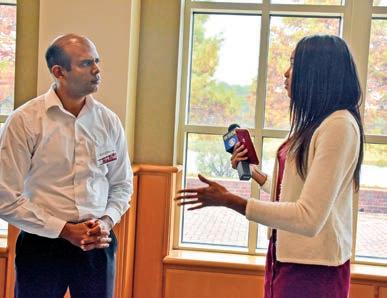Research Briefs Phage Endolysins as Alternative Antibiotics to Control Clostridia in Poultry This study will provide a new intervention for reducing Clostridium perfringens (Cp) colonization in poultry, reducing the risk of necrotic enteritis (NE), improving animal health, and reducing production costs for the industry.
Editor’s Note Dr. Jennifer Timmons
Clostridium perfringens is a Gram-positive, spore-forming anaerobe and causative agent of NE, a huge problem to the poultry industry. There are regulatory moves reducing the use of antibiotics in animal feed. Alternative antimicrobials to fight this pathogen are needed. Bacteriophage (viruses that infect bacteria) lytic enzymes (Ply) (peptidoglycan hydrolases; PGHs) degrade the major structural component of the bacterial cell wall (peptidoglycan; PG) and can kill Gram-positive bacteria (Cp) via osmolysis when enzymes are purified and exposed to the bacteria externally (Roach and Donovan, 2015). Screening of 43 Cp genomes yielded one key phage lytic enzyme (Ply) (PlyCP41) with the highest lytic activity against all 74 Cp isolates tested (56 chicken, 8 pig, 10 beef) (Swift SM et al., 2018). To protect the PlyCP41 protein from conditions in the chicken gut (acidic pH and proteases), PlyCP41 has been expressed in yeast (Saccharomyces cerevisiae) and plants (Nicotiana benthamiana) as potential carrier organisms for delivery of the enzyme to the lower gut. The first major goal is to feed chickens transiently expressed PlyCP41 in plants and yeast and to assay for the ability of these feed additives to reduce a Cp colonization in the gut. A second major goal of this project is capacity building with two historically black colleges or universities (HBCUs): University of Maryland Eastern Shore (UMES) and Morgan State University (MSU). Each of the Co-PIs are faculty at these institutions. UMES is located in a region of Maryland that has close ties to the poultry industry and MSU, located in Baltimore, has an underutilized green house facility. This work is supported by the Agriculture and Food Research Initiative, Grant No. 2019-67016-29959, from the USDA National Institute of Food and Agriculture.
Suzanne Waters Street The individual stories that make up this edition of Ingenuity signal a bright future for agricultural and natural sciences at the University of Maryland Eastern Shore. How exciting is that? Our story continues, and everyone is doing their best to do their part. To our researchers, I hope you get a glimpse of what your work and what the work of your colleagues mean to the big picture. You are amazing! To our student researchers, I hope you see that we need you and that we praise you for joining the world of scientific discovery. You are remarkable! To you, our readers, I hope you will continue to cheer us on our way. It is important to us . . . important to our work. You are our wings! For the Office of Agricultural Communications, looking back and capturing brief moments (in the scheme of things) and committing a narrative to the page is our way of stewarding the work that has been done and communicating that UMES SANS is concerned with what concerns you. But not just that. It is a way for us to help everyone involved to remember the challenges we’ve already overcome, no matter the size, and to allow what has been accomplished to spur us on in tackling the challenges ahead.
“All the world’s a stage, and all the men and women merely players: they have their exits and their entrances; and one man in his time plays many parts . . ..” -William Shakespeare
INGENUITY | SPRING 2020
5














